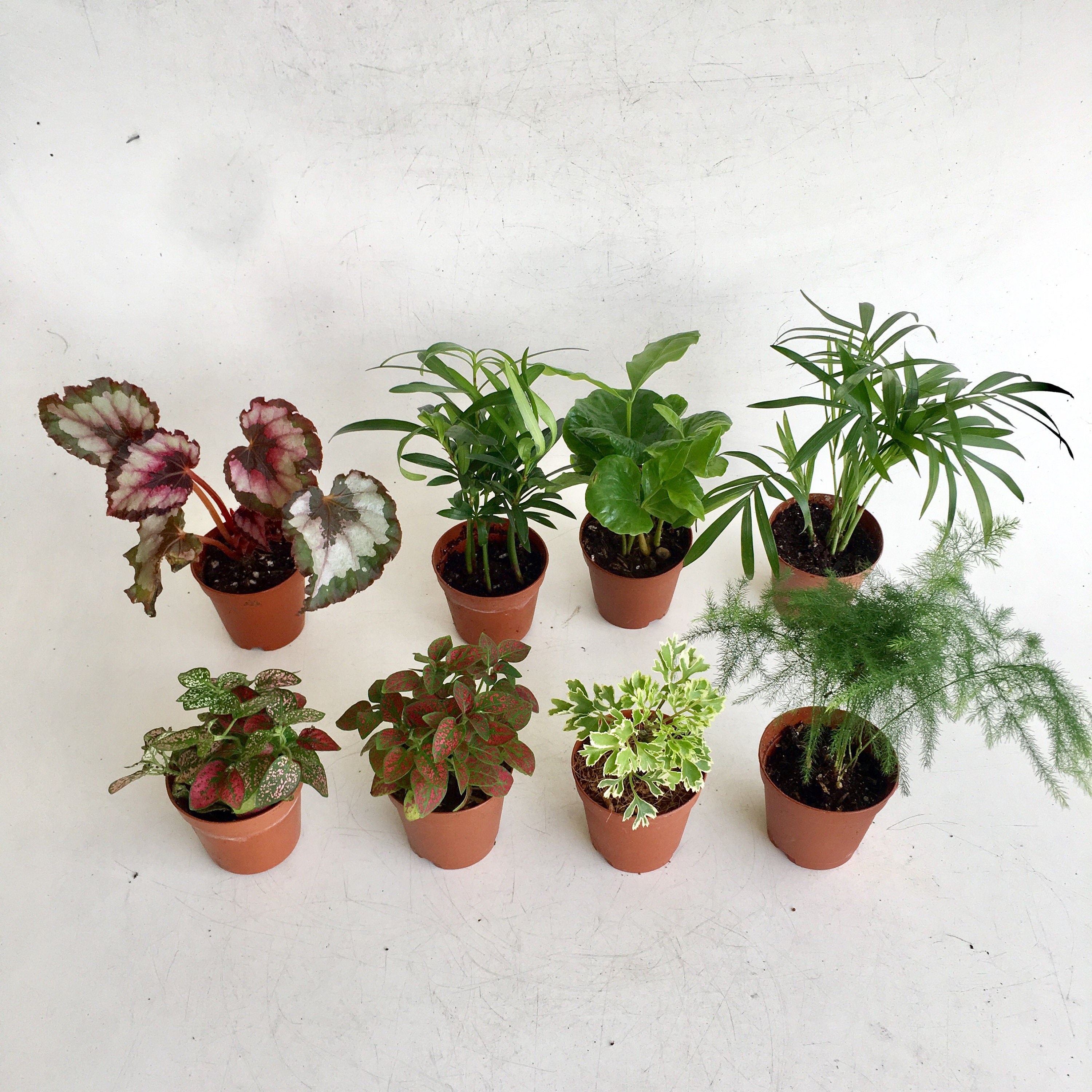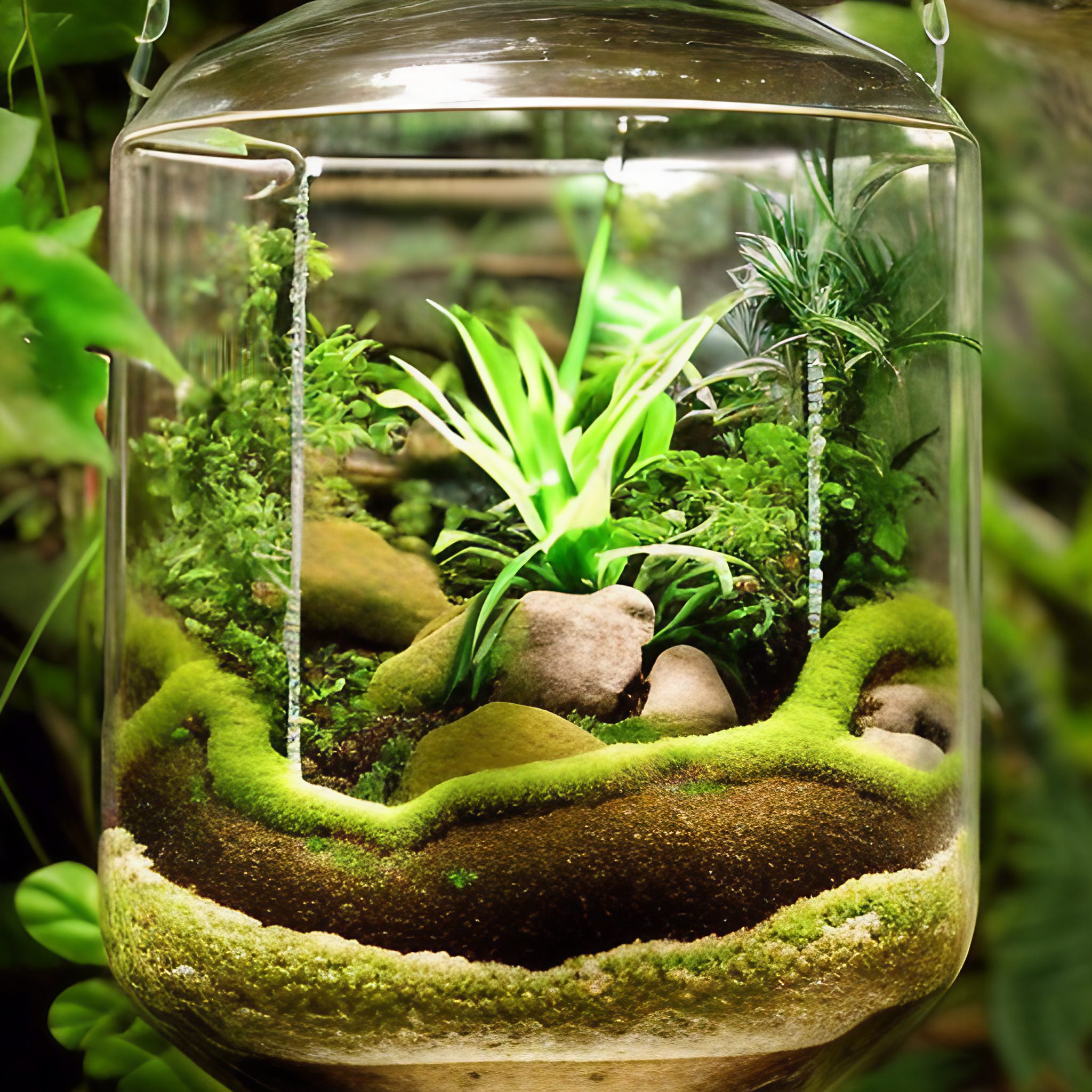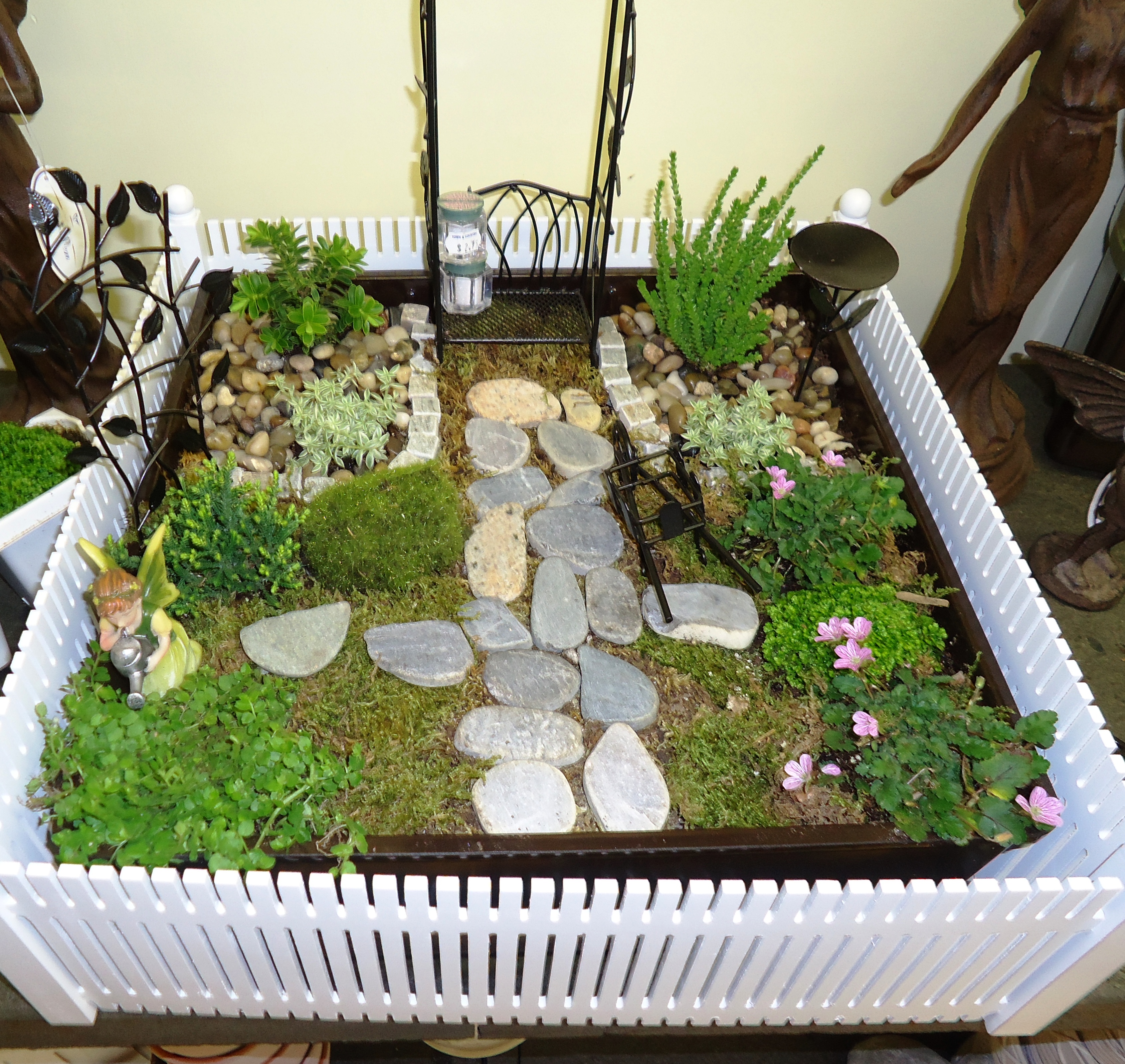Miniature Plants: The Practical Guide to Growing and Caring Efficiently

Miniature Plants: The Ultimate Troubleshooting & Success Manual (From a Recovering Plant Killer)
Picture this: it’s late, your living room is silent except for the soft whir of the refrigerator. You squint at that adorable two-inch succulent perched on your desk... and realize half its leaves just turned translucent. Been there? I have—more times than I’ll admit on the internet.

Before you buy another tiny plant based on a Pinterest photo, let me save you hours, heartbreak, and probably $50 in “replacement minis.” This isn’t just a beginner’s how-to: it’s my ultimate troubleshooting guide to every scenario you’ll actually face with miniature plants—packed with field-tested solutions, stories of what went wrong (and right), and the little tweaks that make epic micro-gardens possible in even the most challenging spaces.
Ready to turn that brown-thumbed history around? Here’s how you truly thrive—with real talk, not regurgitated advice.
1. Beyond Cute — Why Miniature Plants are a Game Changer
Let’s clear up a myth: small doesn’t mean easier. My first year, I accidentally drowned two baby ferns in an espresso cup and crisped three lithops under a reading lamp. The beauty of miniature plants isn’t foolproof simplicity—it’s how much control (and creative freedom) you gain over even the tiniest spots in your life.
- Miniature = intentional: You choose exactly what grows where, from teacup moss to dramatic bonsai trees.
- Maintenance is focused: A single pipette drop can make or break success.
- Unmatched versatility: I’ve transformed my cramped city windowsill into ten distinct mini-biospheres by treating every inch as precious territory.
What qualifies as a “mini”?
I define true miniatures as:
- Mature height rarely exceeding 6–8 inches (junk those mystery “bonsai” seeds from Amazon—you know the ones).
- Slow growers—the kind where forgetting them for two weeks means they look…exactly the same.
- Stay dense/compact rather than trailing for miles (exceptions: tiny trailing pileas can be gorgeous if managed).
2. Pre-Mortem Checklist: Why Most People Fail Before They Begin
Here’s how my first five attempts died—and how yours won’t:
Scenario #1: The Pretty Windowsill That Cooks
Plant: Haworthia
Result: Leaves shriveled like raisins
The Reality: Even desert minis burn in direct sun behind glass—temps spike fast!
Fix: East window only; backup insurance = $18 LED grow light set on timer.
Scenario #2: The Closed Terrarium Rot Out
Plant: Baby tears + fancy moss
Result: Mold takeover in ten days
Why It Happened: No drainage layer; misted daily out of paranoia; forgot airflow.
Fix: Half-inch aquarium gravel/charcoal base + open lid for one hour/day + zero fertilizer until fully established.

Scenario #3: The Desk Plant Drought
Plant: Fittonia
Result: Crispy leaves after one missed weekend watering
Secret Cure: Group all thirstier minis on humidity trays or next to desktop diffusers—nobody alone survives dry office AC!
3. Survival Matrix – Matching Plant Personality to Your Reality
Skip generic “pick slow-growers.” Plug these tested combos into your actual environment:
If your main spot gets…
- Blazing direct sun, but only part of day? Try Echeveria minima, Lithops, Portulacaria afra 'Minima'.
- Filtered light all day?
- Winners: Baby Tears, Pilea depressa, mini African violets (Saintpaulia), jewel orchids.
- Avoid: Most cacti—they’ll stretch pitifully!
- Almost no natural light?
- Only hardcore options survive: try compact pothos cuttings (in water), some dwarf sansevierias, or invest in a $20 clamp-on grow light.
- Humidity roller coasters (bathrooms/windowless kitchens)?
- Top picks: Mosses, mini ferns, fittonias—just never mix with succulents here unless you enjoy growing slime molds.
4. Real-World Planting Hacks — What You Didn’t Know You’d Need
Soil Recipe Shortcuts
Forget pre-mixed “miniature plant soil.” Here are formulas I tested side-by-side using cheap ingredients:
| Type | Recipe | Notes |
|---|---|---|
| Succulent | 60% cactus mix + 30% perlite + 10% orchid bark | Drains FAST; roots pristine |
| Fern/Moss | 50% seedling mix + 40% worm castings + 10% sand | Holds humidity but never soggy |
| Bonsai | Commercial bonsai substrate (Boon Mix) | Worth every penny for shape control |
Don’t skip drainage holes unless you want “root stew.” For closed terrariums, always put half an inch of gravel/charcoal below soil—but even so, use THIN soil layers to discourage anaerobic bacteria explosions.
Tool Triage — My Essentials
After wasting money on Instagram kits:
- Precision tip squeeze bottle ($5 at craft store) beats anything else for watering micro-rosettes or tight glass jars.
- Long tweezers (or chef chopsticks!) prevent accidental leaf-pocalypse during planting/pruning sessions.
- Cheap paintbrush = instant dust cleaner for tiny leaves—seriously boosts growth and shine.
5. Troubleshooting Table of Doom — Every Problem Solved
If something looks off, find your scenario here before panicking:
| Symptom | Probable Cause(s) | Sure-Fire Fix |
|---|---|---|
| Mushy stems/leaves | Overwatering / stagnant air | Unpot immediately; trim dead roots/stems; repot drier/sunny |
| Shrinking/fading foliage | Too little light / malnutrition | Relocate to better-lit area or add LED lamp; dilute liquid feed |
| Weird white fuzz | Mold/mildew/humidity overload | Remove infected parts; increase ventilation; sprinkle cinnamon powder |
| Tiny gnats flying around | Soil staying wet too long | Let surface dry fully between waterings; top-layer with fine gravel |
| Excessive stretching (“leggy”) | Light starvation | Increase natural/artificial light exposure NOW |
| Leaves wrinkling/bending sideways | Water stress OR draft | Adjust schedule (test with finger); move away from vents/windows |
| Growth stalled after repotting | Shock/root damage | Be patient! Mist lightly; move out of harsh light until recovery |
Counterintuitive Discovery:
Sometimes less TLC is more! My healthiest minis often went untouched for weeks except occasional rotation and minimal watering—even when others failed spectacularly because I fussed too much.

6. Advanced Moves for Consistent Wins
Propagation Like a Pro (Even If You’re Afraid)
Tried popping off succulent leaves and watched them just rot? Here’s my fail-safe system:
- Snap clean leaf/cutting early morning while tissue is turgid—not wilted!
- Air-dry overnight under bowl—prevents fungal invasion.
- Lay atop DRY soil—not buried! Mist surface every other day until roots/nubs appear.
- Pot up only once roots hit half an inch—you’ll get near-perfect survival rates vs bury-and-pray methods.
For ferns/mosses:
- Gently tease apart crowns when repotting—do NOT rip apart matted roots!
- Place divided sections directly onto moist substrate and cover loosely with plastic wrap for humidity dome effect until new growth appears.
Combining Plants Without Killing Half Your Display
Rule learned after four disastrous fairy gardens:
Group ONLY by similar water/light/humidity needs! One bad combo example that cost me dearly? Mini aloe next to baby tears—the aloe shriveled while baby tears drowned if I watered enough for both together.
Instead:
Desert-scapes = succulents/cacti/gritty soils/glass open-top trays
Rainforest scenes = ferns/moss/pileas/high-humidity closed jars/bowls
Mixed displays? Use individual pots inside baskets/trays so each gets custom care but still looks cohesive!
7. Budget Breakdown — What Does Success Actually Cost?
My last minimalist setup (2024):
- Haworthia ($7 local shop)
- Glass yogurt jar repurposed ($0)
- Cactus/succulent mix ($6 small bag)
- Perlite ($2 shared among multiple pots)
Total = $15
Terrarium buildout last winter:
- Baby tears starter pot ($9 online incl shipping)
- Wide-mouth glass bowl from thrift store ($4)
- Charcoal/gravel/soil (~$8 total)
Accessories (mini figurines/tweezers/brush): $5
Total = $26
Growing from seed sounds thrifty—but costs easily double once failures mount up due to unpredictable germination/growth rates!

8. From Disaster to Display-Worthy — Case Studies & Conversations
“Why did mine explode with mold?”
My friend Sarah texted this photo in June—a perfect forest-in-a-mason jar…choked out by gray fuzz two weeks later.
Me: “How often are you misting?”
Sarah: “Every morning!”
Me: “Try once/week at most—the glass holds enough moisture.”
Next round? Flourishing green without even opening the lid except for occasional fresh air breaks.
The Office Champ That Survived Total Neglect
Phil brought his daughter’s school science project—a single Peperomia ‘Pixie’—to work purely out of guilt…and forgot about it entirely during his vacation streaks.
Result?
It thrived simply because nobody loved it too much! One accidental drenching per month from office cleaning staff was all it took since it sat near indirect sunlight and never got rootbound thanks to its shallow terra-cotta saucer.
Impulse Bonsai Purchase Gone Right
I reluctantly dropped $40 on a shaped Juniper bonsai at my garden center ("guaranteed indoors" said the tag—it lied). Planted outdoors per real-world forums’ advice instead—and ignored except biweekly soakings and spring fertilizer spikes.
Now entering third year alive...while everyone else’s indoor versions crumpled within months due to overheating/dry air inside apartments!
9. Rescue Protocols—for When Stuff Goes Sideways
Here are not just fixes—but immediate triage moves learned through trial by fire:
-
Soggy plant emergency?
- Yank plant immediately; snip mushy bits; repot into barely damp gritty substrate; position warm+bright but shielded.
- Suspect fungus gnat army? Sprinkle dry cinnamon over topsoil post-rescue—it chokes larvae naturally.
-
Plant not growing (“stuck”):
- Tap pot gently out of container—is rootball solid white mass circling edges? Time to up-pot by just ONE size—not bigger—to encourage fresh feeder roots without swamping them in cold/wet soil pockets.
-
Leaves thinning/stretched weirdly upright or pale green/yellowish tint everywhere:
- Shift closest possible to window/grow-light ASAP—even one week makes visible rebound difference!
- For deep shade homes/offices—I swear by Sansi daylight spectrum bulbs clamped overhead eight hours daily ($16 well spent).
-
Everything lush THEN sudden mass collapse overnight...
- Sneak attack pests (mealybugs/spider mites) often strike fast! Remove visible bugs with damp Q-tip/alcohol solution ASAP—repeat every three days till outbreak gone—or order predatory mites if infestation persists longer than two weeks indoors.
10. Build Your Own Troubleshooting Rituals & Track Success
Make this habit—and you’ll catch problems ahead of time like clockwork:
- Weekly check-in walkaround: Touch each mini's soil surface—dry means water day!
- Visual scan under bright lamp every weekend: Any dust/mold/leaks/webbing? Instant fix keeps bigger headaches away.
- Rotate displays monthly between rooms/windowsills/time-of-year—to see which conditions yield best color/shape/growth spurts where YOU live/work…not some influencer's greenhouse.

Old-school pro tip I picked up years ago at a nursery workshop—
“Your best tool isn’t fancy fertilizers or apps—it’s curiosity matched by regular observation.”
The sooner you spot yellowing/excess droop/weird spots…the faster you can course correct!
Final Thought (& Invitation)
Miniature plants have become more than décor—they’re living proof that tiny steps done thoughtfully deliver massive satisfaction over time.
Whatever goes wrong along your journey,
remember:
- Every failure is feedback,
- There’s always another approach,
- Nobody starts as an expert—not even those smiley Instagram accounts who never show their compost bin full of lost attempts!
So start wherever feels doable today—
Tiny dish garden? One artfully lonely succulent?
Treat yourself like an experimenter,
not someone trying to impress anyone else.
When things get dicey, come back here—
Use this troubleshooting manual like your secret cheat code,
and DM me on [Reddit/r/miniplants] whenever you rescue something against the odds!
Your future self will thank you—and so will anyone lucky enough to inherit one of your handmade micro-worlds someday.
Happy Growing!
I've got your back—from crispy leaf disasters straight through lush windowsill jungles—
one mini at a time 🌱



